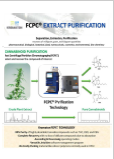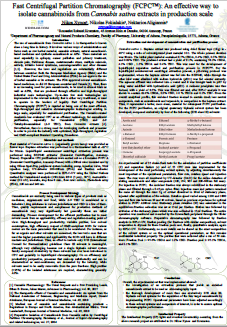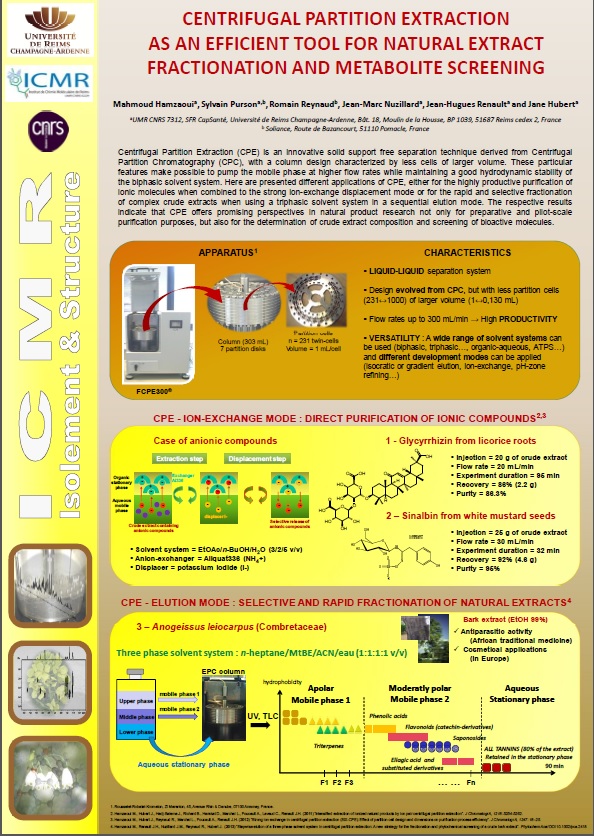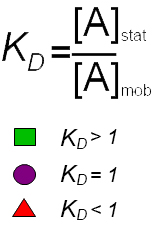CANNABINOID
- Cannabis refining process
Links:
http://www.rousselet-robatel.com/applications/cannabis-refining/
https://www.youtube.com/watch?v=2WgaWNlMijM
https://nomadlabs.eu/cannabinoid-extract-purification/
SCIENTIFIC ARTICLES
Over one hundred scientific articles covering KROMATON's Fast Centrifugal Partition Chromatography equipments have been published. Below are two non-exhaustive lists of such articles.
- Scientific articles ranked by purified compounds family

- Scientific articles ranked by application fields

BOOKS
-
Countercurrent Chromatography: The Support-free Liquid Stationary Phase, Alain BERTHOD, 2002, 422p
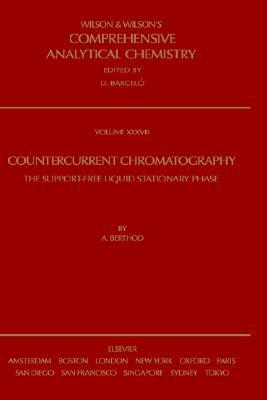
-
Preparative Chromatography Techniques: Applications in Natural Product Isolation, Kurt HOSTETTMANN, Andrew MARSTON, Maryse HOSTETTMANN, 1998, 260p
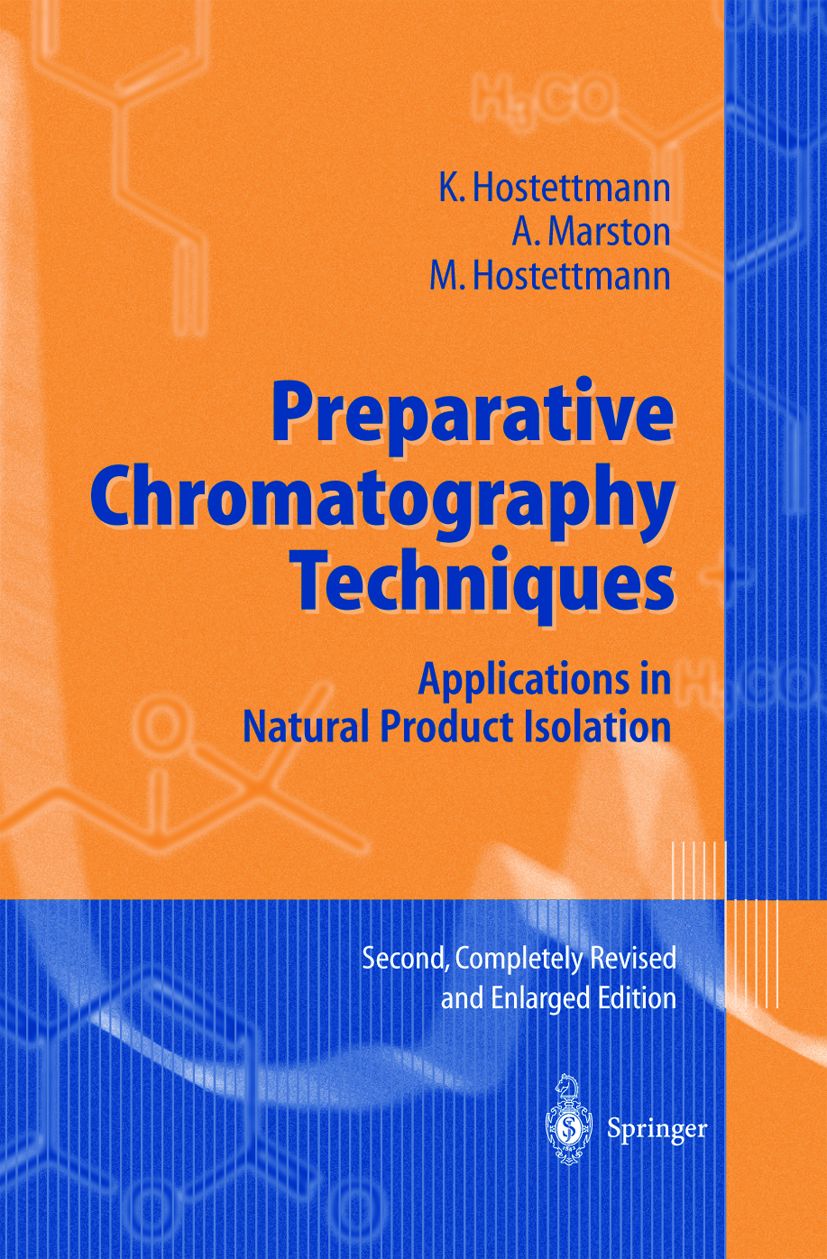
-
Centrifugal Partition Chromatography, Alain P. FOUCAULT, 1995, 431p
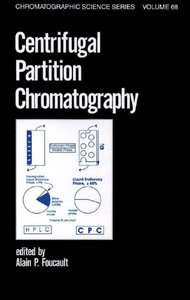
Posters
- Centrifugal partition extraction as an efficient tool for natural extract fractionation and metabolite screening, Mahmoud Hamzaoui, Sylvain Purson, Romain Reynaud, Jean-Marc Nuzillard, Jean-Hugues Renault, Jane Hubert AFERP (Brussels)
- Fractionation of cocoa procyanidins according to the degree of polymerization by centrifugal partition chromatography, Jan A.Glinski, Peter Kinkade, Vitold B. Glinski, Matthew H. Davey, Harvey Stanley, W. Jeff Hurst
ICNPR 2012 (New York)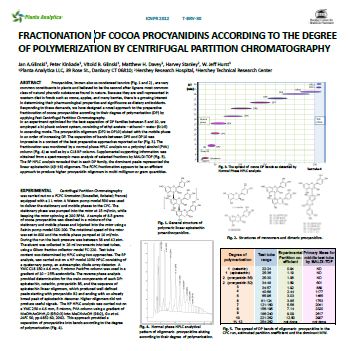
- Efficient small volume hydrostatic countercurrent chromatography column, Alain BERTHOD, Nazim MEKAOUI, Jérémy MEUCCI, Karine Faure
HPLC 2012 (Anaheim), CCC 2012 (Hangzhou)

- Evaluation of Limonene as a possible "green" non polar solvent for alkane replacement, Karine FAURE, Nazim MEKAOUI, Alain BERTHOD
CCC 2012(Hangzhou)

- Chromatographie à contre courant : nouvelles colonnes hydrostatiques performantes : les colonnes FCPC®, Alain BERTOD, Nazim MEKAOUI, Jean Luc MILESI, Jérémy MEUCCI, Francois de la POYPE, Roger MICHUD, Michel L’KHERBA
SEP 2011 (Toulouse)

- Large-scale purification of glucosinolates by strong ion-exchange centrifugal partition chromatography from lab-scale CPC to 5L-pilot-scale FCPC, TORIBIO, Leslie BOUDESOCQUE, Benoit PINEL, Michel LAFOSSE, Francois de la POYPE, Jean Marc NUZILLARD, jean Hugues RENAULT
CCC 2010 (Lyon)
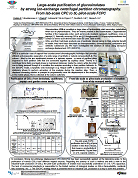
Application notes
Application notes of Kromaton's laboratory :
| Note title | References |
|---|---|
| Evaluation of retention and pressure with different solvent systems on a Bench scale FCPC200 | Application note 04001 |
| Evaluation of efficiency and resolution according to flow-rate and rotation speed | Application note 04002 |
| Evaluation of efficiency and resolution according to flow-rate and rotation spee | Application note 04003 |
| New 50 ml rotor efficiency and fastness comparison with other FCPC roto | Application note 04004 |
| General fractionation of Hypericum perforatum extract on a Bench scale FCPC1000 | Application note |
| High purification of peptide from crude synthetic mixture on Bench scale FCPC200 | Application note 04006 |
| Binary fractionation of neoruscogenin and ruscogenin on Bench scale FCPC1000 | Application note 04008 |
| Piperine purification : injection capacity test on Analytical scale FCPC50 | Application note 04009 |
| Piperine purification : resolutions according to flow rate and rotation speed | Application note 04010 |
| Scale up studies with alkyl benzene on 50, 200 and 5000 ml FCPC columns | Application note 05012 |
| Scale up on peptide purification from Bench scale FCPC200 to pilot scale FCPC5000 | Note d'application 06013 |
| High purification of capsaicine from crude hot pepper extract on analytical FCPC50 | Note d'application 06014 |
| Spilanthol purification from Jambu extract on analytical FCPC50 | Application note 06015 |
If you wish to access a note that is not available for download, feel free to contact us and we will send it to you shortly.
TERMINOLOGY
Centrifugal Partition Chromatography (CPC) is one of the various techniques constituent of Countercurrent Chromatography (CCC).
Centrifugal Partition Chromatography is also known as Hydrostatic Countercurrent Chromatography. This refers to the rotary movement of the column which rotates around one single rotation axis, contrary to Hydrodynamic Countercurrent Chromatography systems that have a planetary rotation movement around two rotating axes.
WORKING PRINCIPLE
Centrifugal Partition Chromatography is a liquid-liquid chromatography technique. The Kromaton Fast Centrifugal Partitioning Chromatograph thus functions based on the principles of liquid/liquid partitioning chromatography: two immiscible liquid phases are mixed together to form a two-phase system, and are then separated multiple times. The individual solutes are isolated based on the different partitioning coefficients of each compound in this two-phase system.
One of the liquid phases of the two-phase system is used as a stationary liquid phase: it is fed into the column (the rotor) while the latter is spinning at moderate rotational speed. The stationary phase is retained inside the rotor by the centrifugal force generated.
The second phase of the two-phase system is used as the mobile phase containing the solutes to be extracted. It is fed under pressure into the rotor and pumped through the stationary phase.
Both phases are mixed together. It is at that time that the exchange of molecules between the two phases occurs. The separation of the solutes is achieved as a function of the specific partitioning coefficient (Kd) of each solute between the mobile and stationary phases. The mobile phase then decants at each cell outlet thus entering the next cell.
The eluted fractions of the mobile and stationary phases are collected over a period of several minutes to several hours. These fractions, or eluates, will contain the individual purified solutes.
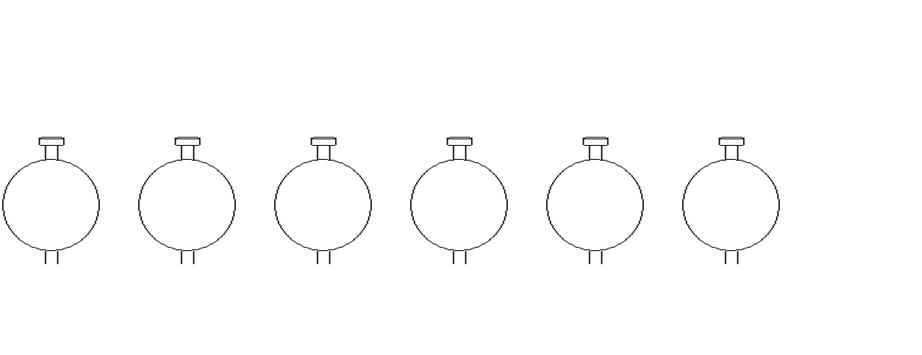
The Fast Centrifugal Partition Chromatograph FCPC’s rotor consists of several individual Twin Cell discs, the number of which varies based on the process.

Seals (gaskets) are positionned between adjacent discs so as to isolate the cells from one disc to the other.
The discs are aligned in such a way that all the cells are in series, thus creating several hundred extraction stages.
Each cell corresponds to a discrete extraction stage where the two phases are mixed together before decantation.
APPLICATION FIELDS
Centrifugal Partition Chromatography is a preparative chromatography technique. It is an alternative to classic purification techniques such as preparative HPLC (High Performance Liquid Chromatography) or Flash Chromatography.
Centrifugal Partition Chromatography can be used for:
- Final purification (purity > 99.5%) of molecules derived from natural extracts, synthetic mixtures or biological matrices
- Fractionization or pre-fractionization of highly complex crude extracts
- Liquid-liquid extraction using the newly developed Centrifugal Partition Extractors (CPE) prototypes

APOLAR POLAR
Simple lipids - Sterols - Inorganic elements - Polyphenols - Polysaccharides-Proteins
Phospholipids - Various inorganic acids - Anthocyanins - Peptides
Glycolipids - Alkaloids - Flavonoids - α amino acids
BENEFITS
Because there is no packed solid phase required, Centrifugal Partition Chromatography and the FCPC range offers many benefits:
COST EFFECTIVE
- No solid packing material that is costly to buy, replace or reprocess
- Low solvent consumption (10 to 25% less)
- One single rotor adapted to all types of separations
A SOFT TECHNIQUE
- No irreversible adsorption or sample loss -> 100% recovery
- No denaturation of fragile molecules due to interaction with silica -> adapted to fragile molecules
EFFICIENT
- High purification levels up to 99.9%
FASTER
- 3 to 5 times faster than other current solutions
FLEXIBLE
- Adapted to all types of products, natural or synthetic
- Well-adapted to a very wide range of polarities
IDEAL FOR EASY SCALE UP
- One single separation/purification technique adapted to samples ranging from mg to several kg






